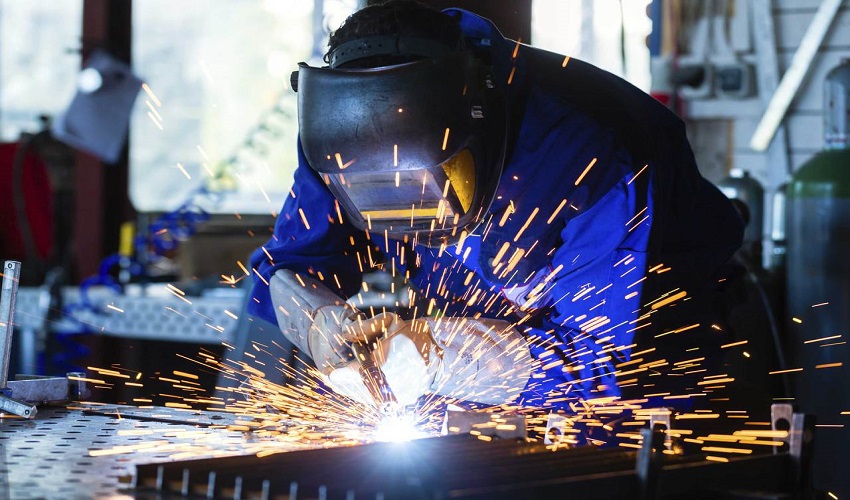Ingenious Fads in Steel Construction: Enhancing Toughness and Precision
In the realm of steel manufacture, the quest of durability and accuracy has brought about a wave of cutting-edge trends that are improving the market. From developments in welding modern technologies to the combination of robot automation in construction processes, the landscape of steel manufacturing is advancing rapidly. High-strength alloy growth, coupled with the use of 3D modeling and simulation software program, is pushing the limits of what is attainable in terms of structural integrity and precision. Moreover, the expanding focus on lasting methods in steel production is not only driving efficiency but also promoting a more environmentally conscious approach to construction. These patterns are not simply forming today but additionally preparing for the future of steel construction, guaranteeing further enhancements in durability and precision.
Advanced Welding Technologies
In the world of steel construction, the fostering of sophisticated welding technologies has substantially reinvented the sector's method to achieving premium high quality and precision in structural welds. Advanced welding modern technologies, such as laser beam welding and friction mix welding, have arised as game-changers in the area. By leveraging these innovative welding strategies, steel producers can boost the longevity, strength, and precision of their structural welds, meeting the progressively demanding requirements of contemporary construction jobs.
Robotic Automation in Manufacture
Embracing robotic automation has become a cornerstone of modern steel fabrication techniques, improving processes and boosting efficiency across the market. Robots are changing the means steel elements are made, providing unrivaled accuracy and rate while decreasing human mistake. These automated systems can deal with repeated jobs with consistent precision, resulting in greater top quality output.
One trick advantage of robotic automation in steel manufacture is the capability to work around the clock without exhaustion, substantially enhancing production outcome. This continual procedure lessens downtime and increases project timelines, ultimately conserving prices for suppliers. Additionally, robotics can be programmed to execute detailed tasks that may be unsafe or challenging for human workers, boosting security in the office.
Furthermore, robot automation enables smooth combination with other digital modern technologies, such as computer-aided layout (CAD) software and Web of Points (IoT) systems (steel fixing). This interconnected technique improves interaction in between different stages of construction, maximizing workflows and making sure real-time surveillance and control. As the steel manufacture industry remains to advance, robotic automation stands out as a transformative force driving performance and precision in manufacturing procedures

High-Strength Alloy Growth
The advancement of high-strength alloy growth in steel fabrication is improving the industry's strategy to boosting product durability and performance. High-strength alloys are engineered to exhibit superior mechanical homes, such as enhanced tensile stamina, strength, and rust resistance compared to traditional steel grades. By including these innovative alloys right into construction processes, manufacturers can produce parts that hold up against greater anxiety levels and harsh environments, bring about even more reputable and durable final product.
One trick advantage of high-strength alloy advancement is the ability to reduce product thickness without compromising architectural stability. This not only causes lighter-weight components but additionally adds to cost financial savings and boosted efficiency in manufacture and assembly processes. In addition, the improved strength-to-weight proportion of these alloys enables for the style and construction of frameworks with higher load-bearing capacities while decreasing general weight.
3D Modeling and Simulation Software
Advancements in steel manufacture procedures have been significantly propelled by the assimilation of sophisticated 3D modeling and simulation software tools. These devices allow fabricators to produce in-depth digital designs of their tasks, allowing them to visualize the last item with precision before any manual labor begins. By replicating various stress aspects, ecological conditions, and structural lots, fabricators can enhance layouts for boosted sturdiness and efficiency. Additionally, 3D modeling and simulation software application enhance the manufacturing procedure by identifying potential issues early, lowering the need for costly rework and reducing product waste.

Sustainable Practices in Steel Manufacturing
Incorporating lasting techniques into steel manufacturing procedures is essential for minimizing ecological influence and making sure long-term resource availability. One essential sustainable technique is the adoption of energy-efficient i loved this innovations to reduce greenhouse gas discharges throughout the steel production procedure. This includes utilizing renewable energy resources, such as solar or wind power, to power steel plants and implementing energy-efficient devices to maximize energy usage.
One more crucial element of sustainable steel production is the responsible sourcing of resources. This entails making certain that the iron ore and other resources made use of in steelmaking are gotten from eco friendly and honest sources. By advertising openness in look at here now the supply chain and sticking to rigorous environmental standards, steel makers can decrease the adverse impacts of resource extraction on local environments and areas.

Final Thought
To conclude, the innovative fads in steel construction such as advanced welding technologies, robot automation, high-strength alloy advancement, 3D modeling and simulation software application, and sustainable techniques are improving the resilience and precision of steel items. These developments are reinventing the steel fabrication sector by enhancing sustainability, top quality, and effectiveness. It is clear that the future of steel manufacture lies in embracing these innovative technologies to satisfy the demands of contemporary construction and production sectors.
In the realm of steel manufacture, the pursuit of longevity and accuracy has led to a wave of cutting-edge patterns that are reshaping the industry.In the realm of steel fabrication, the adoption of cutting-edge welding innovations has actually considerably changed the industry's method to accomplishing exceptional high quality and accuracy in structural welds. As the steel fabrication industry continues to progress, robot automation stands out as a transformative pressure driving efficiency and precision in producing processes.
Moreover, recycling and reusing steel scrap and waste products play a substantial function in improving the sustainability of steel manufacturing. steel fixing.In conclusion, the innovative patterns in steel construction such as sophisticated More Bonuses welding innovations, robot automation, high-strength alloy development, 3D modeling and simulation software, and sustainable methods are enhancing the sturdiness and precision of steel items